Visit These 4 National Parks in the PNW
The PNW national parks are uniquely beautiful and deserve to see us on our best behavior—following all park rules, leaving no trace, and maintaining a safe distance from wildlife. Please note that this post contains affiliate links that I’ve hand-selected with products I genuinely use and love. If you make a purchase through them, I may earn a small commission at no cost to you.
In the rugged mountains and wild forests of the Pacific Northwest national parks, a few stand out as must-visit spots. Scattered across Washington and Oregon, some of my favorite parks and forests in the U.S. offer a glimpse into the rare and unique temperate rainforest biome: Olympic National Park, Mount Rainier National Park, Mount Hood National Forest, and Crater Lake National Park.
Stands of old-growth coniferous trees blanket the mountain slopes while mighty rivers and waterfalls flow freely in groves filled with dappled sunlight and wildlife. The wild Pacific Coast opens up your view, the sapphire ocean stretching as far as the eye can see. Can you tell it’s one of my favorite places on Earth?
With so much to see and do in the PNW, it helps to have a route with the best places to hike, enjoy scenic views and drives, and camp in the enchanted forests that make this region so spectacular. Dive into this 7-day road trip to see the highlights of 4 PNW national parks and forests that will take your breath away.
7-Day Pacific Northwest National Parks Road Trip Route
- Fly into Seattle, WA
- Olympic National Park, WA
- Mount Rainier National Park, WA
- Mount Hood National Forest, OR
- Crater Lake National Park, OR
- Fly out of Medford, OR
-
- 👉 Find the perfect hotel
- 🚗 Rent a Car
- 🥾 Find a nearby Trail
- 🧳 Pack the perfect suitcase with these packing cubes
- 👉 All the gear you need for your adventure
- 📱Grab an E-Sim for travel abroad
Day 1: Enter Olympic National Park, WA
I can’t think of a better place to start this road trip than Olympic National Park. This park is mountainous and features sections of rainforest, dry forest, and Pacific coastline that shelters incredible marine life. It’s massive (over a million acres) and a UNESCO World Heritage Site. You’ll explore the Olympic Mountains, alpine lakes, thundering falls, and wild beaches on this trip.
Mt. Townsend Summit Hike
We’re going to travel Highway 101 counter-clockwise around the park, starting in the Olympic Mountains. On the northeastern end of the park, the 8.5 mi out-and-back Mt. Townsend trail presents a welcome challenge as you arrive in the park’s Buckhorn Wilderness.
Hike through forests and meadows before the trail opens up to mountain views as you near the summit. You’ll climb 2,982’ to reach the summit. Go slow, especially on the steep switchbacks, and take breaks along the way. It’s a calf-burner that rewards you with some of the best views in the park.
Plan on about 5.5 hours for this exhilarating hike. Enjoy views of Baker, Glacier Peak, Rainier, and Puget Sound from the summit before heading back down to get some rest. Camp inside the park or spend the night in nearby Sequim, WA (affordable accommodations and great breakfast spots).
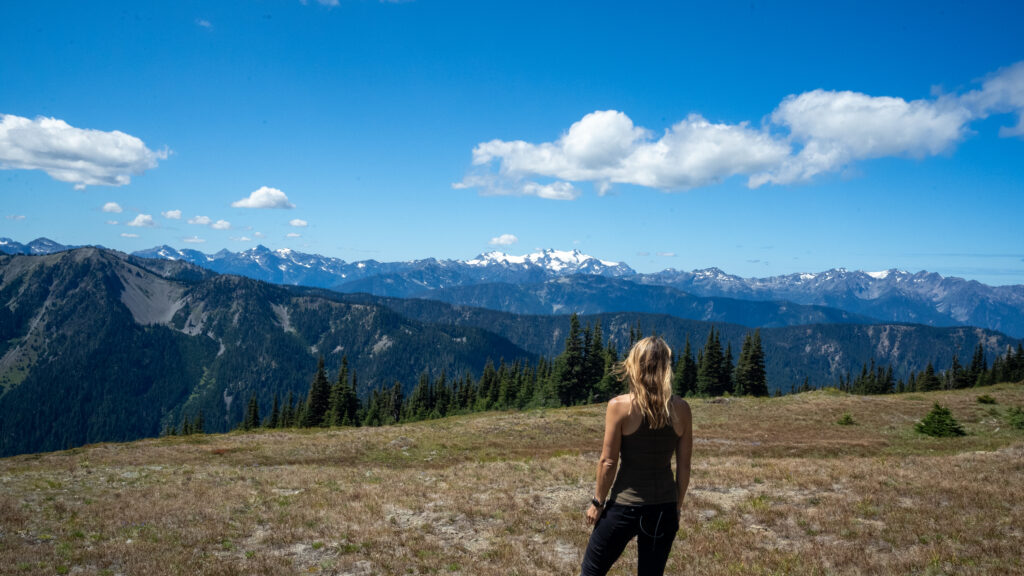
Day 2: Hurricane Ridge, Obstruction Point Road & Marymere Falls
Head to the Hurricane Ridge Entrance Station early to reach stunning mountain views and experience an intense microclimate on the rugged slopes of Hurricane Ridge. Roads can be closed through July due to heavy snowfall, so check ahead before driving out.
It’s a great area for short or long hikes, so consider any of these to start your day:
- Cirque Rim (0.5 mi, easy): Paved; views of Port Angeles and Strait of Juan de Fuca
- High Ridge (0.5 mi loop, moderate): Part paved loop with panoramic views of the mountains, connects to 0.1 mi Sunrise Point dead-end trail
- Klahane Ridge (3.8 mi, moderate): Ridge trail with mountain views that meets Klahane Switchback trail
- Hurricane Hill (1.6 mi, moderate): Paved; amazing views of Olympic Mountains and Pacific Ocean
Scenic Drive on Obstruction Point Road
From the Hurricane Ridge Visitor Center, drive the scenic 8-mile Obstruction Point Road. It’s the highest-elevation road in the park, topping out at 6,150’ at Obstruction Point! This is a white-knuckle drive in spots with hairpin turns and the narrow road. The views make it well-worth it.
Take it slow and marvel at the mountain slopes around you, the deep, lush valleys, and the wild landscapes of the park as you overlook it all with almost a bird’s-eye view. The drive takes about 45 minutes each way if you don’t stop — but you’ll absolutely want to grab some pictures.
Marymere Falls Trail
Head to the Lake Crescent area of the park to the Storm King Ranger Station. You can explore a nice little 1.5-mile loop trail to Marymere Falls. The Marymere Falls loop leads you along and over Barnes Creek, through old-growth trees that offer plenty of shade on a warm day. It’s gorgeous and a nice spot to spend a few minutes taking in the views and listening to the babbling water.
Follow the loop back to the trailhead and get to your accommodations for the night. Lake Crescent Lodge is nice and the Fairholme Campground is right on the shores of Lake Crescent (reservations required).
Think you can squeeze two more days into your Olympic National Park trip? Check out the 4-day itinerary for Olympic National Park next.
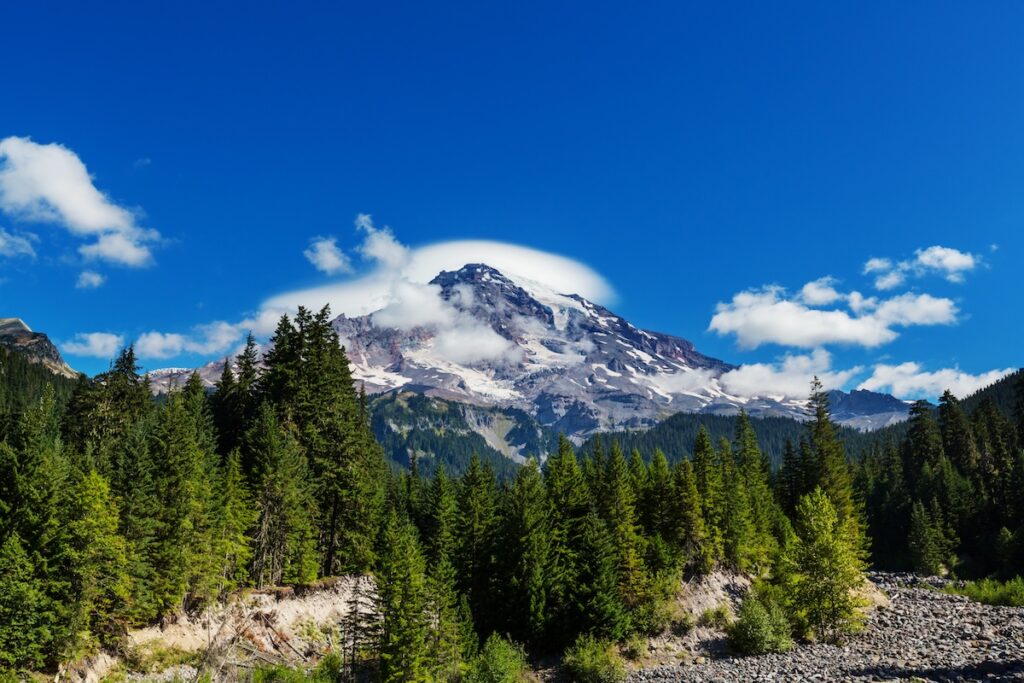
Day 3: Drive to Mount Rainier National Park, WA
It’s a 4-hour drive to Mount Rainier National Park from the Lake Crescent area, so set out early to enjoy the most time in the park. You can use the Ohanapecosh entrance (summer only) from Highway 12 and State Route 123.
Silver Falls Loop Trail
The entrance to the Silver Falls Loop trailhead is in the Ohanapecosh Campground once you enter the park. The 2.9-mile loop is moderate, takes about an hour with nice Ohanapecosh River scenery, and offers stunning views of the silvery falls.
Sourdough Ridge Trail at Sunrise
Head 45 minutes north along 123 to Sunrise and you’ll reach the Sourdough Ridge Trailhead. There are plenty of other trails here to choose from, like:
- Sunrise Nature Trail (moderate, 1.5 mi loop, under 1 hour): 300’ elevation gain as you climb Sourdough Ridge and back down
- Mount Fremount Lookout Trail (moderate, 5.6 mi, under 3 hours): Trail splits from Frozen Lake to the Mount Fremont Trail up to an old fire lookout
Take the Sourdough Ridge trail west to Frozen Lake. It’s 3 miles round-trip with about 500’ of elevation gain. Split off the main trail on the left fork to climb the ridge, then continue left to Frozen Lake — it gets its name from the snowdrift along its banks that remains well into summer. You’ll see incredible views of Mount Rainier on this hike.
Stay at the White River Campground and follow the instructions to secure your campsite with Mobile App Scan and Pay after choosing one that’s unoccupied.
Day 4: Explore Paradise in Mount Rainier
Mount Rainier’s Paradise section is the most popular in the park, famous for wildflower meadows in every color, waterfalls, lakes, glaciers, and scenic mountain views. There are excellent trails in this part of the park!
Skyline Trail to Panorama Point
This is *the* hike in Rainier. Prepare for a 6-mile round-trip hike with rock scrambles, steep 1500’ elevation gains, and amazing views of wildlife, wildflower meadows, waterfalls, glacier rubble, and peaks like Mount Hood, Mount Adams, and Mount St. Helens. In fact, this is one of the best waterfall hikes in the U.S.
Wear sturdy footwear and set out early on a sunny day for the best views and follow the signs to Panorama Point from the Jackson Visitor Center. The first mile is the steepest and it does get better.
Inspiration Point Lookout & Reflection Lakes
On Stevens Canyon Road (east of Paradise Valley Road), pull off at Inspiration Point for jaw-dropping views of Mount Rainier and the Tatoosh Peaks. You can see for miles and the valley stretches before you with wildlife like marmots playing in the surrounding rocks.
Travel a few minutes further to reach Reflection Lakes, which famously mirror Mount Rainier with calm water. Wildflower meadows surround the lake and if you’re up for it, a 3-mile loop encircles it. This is a great spot to take some photos and relax in the beauty of the park.
Make reservations at the historic Paradise Inn tonight — onsite dining, gift shop, and comfy rooms with a long-spanning history make it a neat experience.
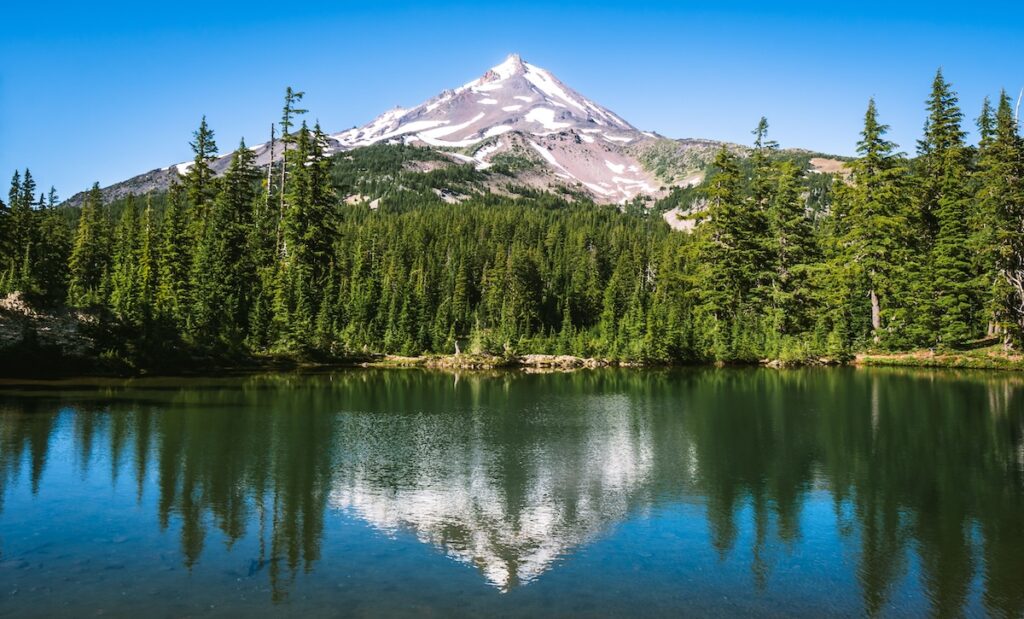
Day 5: Mount Hood National Forest
It’s roughly a 3.5-hour drive to get to Mount Hood National Forest from Paradise in Mount Rainier National Park. Mt. Hood is an active 11,250’ stratovolcano and the highest point in Oregon. About an hour and 20 minutes from Portland, the national forest surrounding it is one of the most popular places for locals and visitors to hike, camp, and explore with skiing, glaciers, easy to challenging trails, and numerous waterfalls.
Timberline Lodge & Pacific Crest Trail
Cinephiles may want to stay at Timberline Lodge — the Overlook Hotel in Stephen King’s The Shining. It’s a great place to start your adventure, sitting in the shadow of Mt. Hood. There are plenty of hiking trails you can take from the lodge. You can cross off a bucket list item and hike part of the Pacific Crest Trail!
Pick up the trail near the lodge and follow it 4.7 miles down to Zigzag Canyon (about 2 hours and 20 minutes). Enjoy fantastic views of Mt. Hood, wildflower meadows, and the rocky walls of the canyon. Hike back to the lodge and get on Highway 26 to reach the Mirror Lake trailhead (about 16 minutes away).
Mirror Lake Trail
The Mirror Lake loop trail is considered moderate — about 4.2 miles (roughly 2 hours) and offers great views of glacial Mirror Lake surrounded by the Salmon-Huckleberry Wilderness. A wooden boardwalk leading to the lake offers stunning views of Mt. Hood, casting its reflection into the still water of the lake.
One section is a steep, uphill trek with some winding switchbacks leading to the lake. It’s a popular trail, so you’re sure to encounter others on the path. Hike the loop around the lake to take in the views and see some wildflowers!
Little Zigzag Falls Trail
Drive 12 minutes to reach the Little Zigzag Falls trail, a quick hike to end your day in Mount Hood National Forest. This easy, 0.6-mile path runs riverside to reach Little Zigzag Falls. The falls are more impressive than you’d think with such an easy and flat hike, gushing like a fire hydrant over logs and rocks at the end of the trail.
Head back to Timberline Lodge (about 11 minutes) to rest up for the final park in the itinerary: Crater Lake!
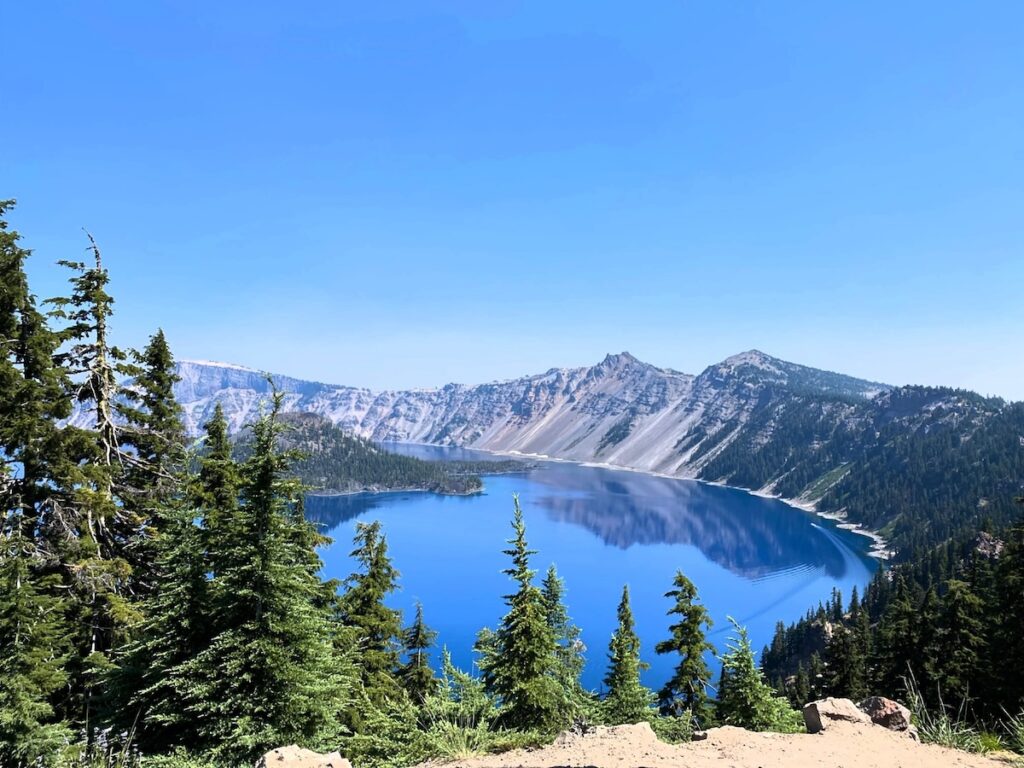
Day 6: Crater Lake National Park
Crater Lake National Park is one of the nation’s oldest parks. The famed Crater Lake was formed when Mount Mazama erupted and the top collapsed. It’s the deepest lake in the U.S. and one of the deepest in the world. Surrounded by rocky slopes, volcanic formations, and cliffs, this park has some amazing hiking trails.
Scenic Rim Drive
This scenic, 33-mile drive is a great way to get to know the park! You’ll take in views of Crater Lake, meadows, and dense forests along the way with 30 overlooks. Bring a picnic (there are 5 picnic areas) and wander along some of the trails you find, like:
- Plaikni Falls (easy, 2 mi, 45 min): Snowmelt-fed waterfall with lots of wildlife and wildflowers on Pinnacles Road from Rim Drive
- The Pinnacles (easy, 0.8 mi, 15 min): Forested walk overlooking a canyon of pinnacles, or volcanic spires, on Pinnacles Road from Rim Drive
- Castle Crest (easy, 1.3 mi, 30 min): Loop trail that rings a meadow sheltering 200+ wildflower species below Castle Ridge, located ¼ mile from park headquarters on East Rim Drive
Hug the curves and marvel at how the road seems to disappear in front of you with its winding turns. The drive takes about 2 hours.
Sun Notch Loop Trail
Start exploring on the 0.8-mile Sun Notch loop trail at the southern end of Rim Drive. It’s a short, 22-minute hike with a lot of bang for your buck. You’ll see Phantom Ship, a small island in Crater Lake, when you stop at the overlook. Even in July, you’ll still see snow on the trail!
Garfield Peak Trail
This is one of the best trails in Crater Lake and with its 1,076’ of elevation gain, you’ll hike 3.5 miles to some of the best views of the lake in the park. Snow can present challenges even late in summer, so poles may be required for sections of the trail.
The trail is moderately strenuous (takes about 2 hours and 10 minutes) and pretty popular because of the incredible views it offers over the lake and forests. You’ll pass stands of evergreen trees before the path opens up to a panoramic view of Crater Lake.
Camp in the peaceful, forested Mazama Campground (make reservations in advance to snag a spot).
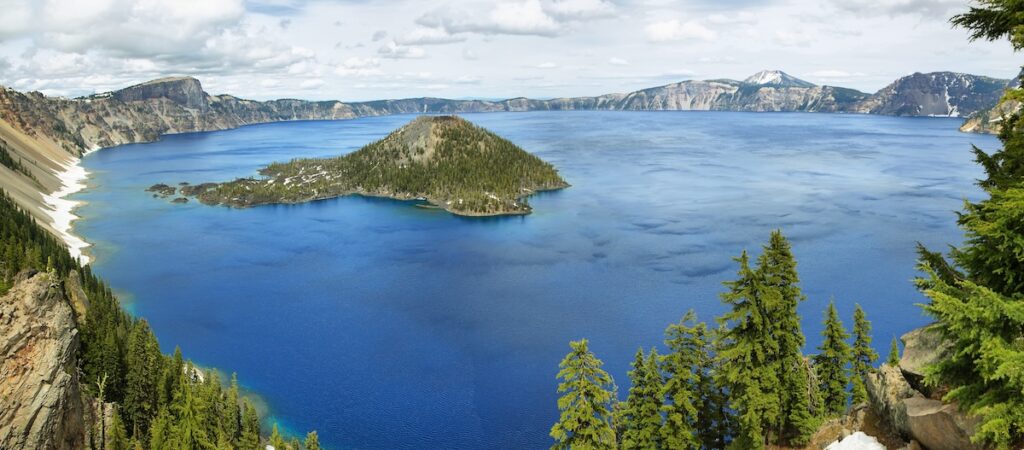
Day 7: Boat Tour & Fly Home
Book a Wizard Island boat tour through Explore Crater Lake to see the highlights of the park from a boat and explore Wizard Island, the 763’ cinder cone formed from the collapse of Mount Mazama. The tour takes about 5 hours total and is the perfect way to end your Pacific Northwest national parks tour.
To take the tour, you’ll need to book reservations in advance (I recommend at least a month out for the most availability) and choose the 9:45 a.m. time slot to wrap up your tour in time to catch a flight home.
You’ll have to hike the short but steep 1-mile Cleetwood Cove Trail to get down to Crater Lake and reach the dock where you’ll board the tour boat. The trail elevation drops 700’ in 1 mile, so it can be hard on the knees on the way down and a difficult climb back up.
Tours are available from early July through mid-September. When you’re done, it’s time to fly home. The Rogue Valley International Medford Airport in Medford, OR is the closest airport to the park.
What to Expect When Visiting PNW National Parks
- Precipitation: You’ll be in the temperate rainforest, so prepare for precipitation. This is one of my favorite rain jackets. Winter sees lots of rain at lower elevations and snow in the mountains. June-August are the best and driest months.
- Bring binoculars: You’ll see a lot more wildlife with binoculars, including migrating humpback whales from August-September and gray whales from February-May.
- Layer up: Higher-elevation parks see cool summer temperatures with highs in the 50s-60s. Bring layers to don or shed as you hike and explore.
With 7 days in the best Pacific Northwest national parks, you’ll encounter some of the most rugged and unspoiled beauty this region has to offer. From Olympic National Park to Crater Lake, this could be the best week of your life as an explorer!
Pin this article!


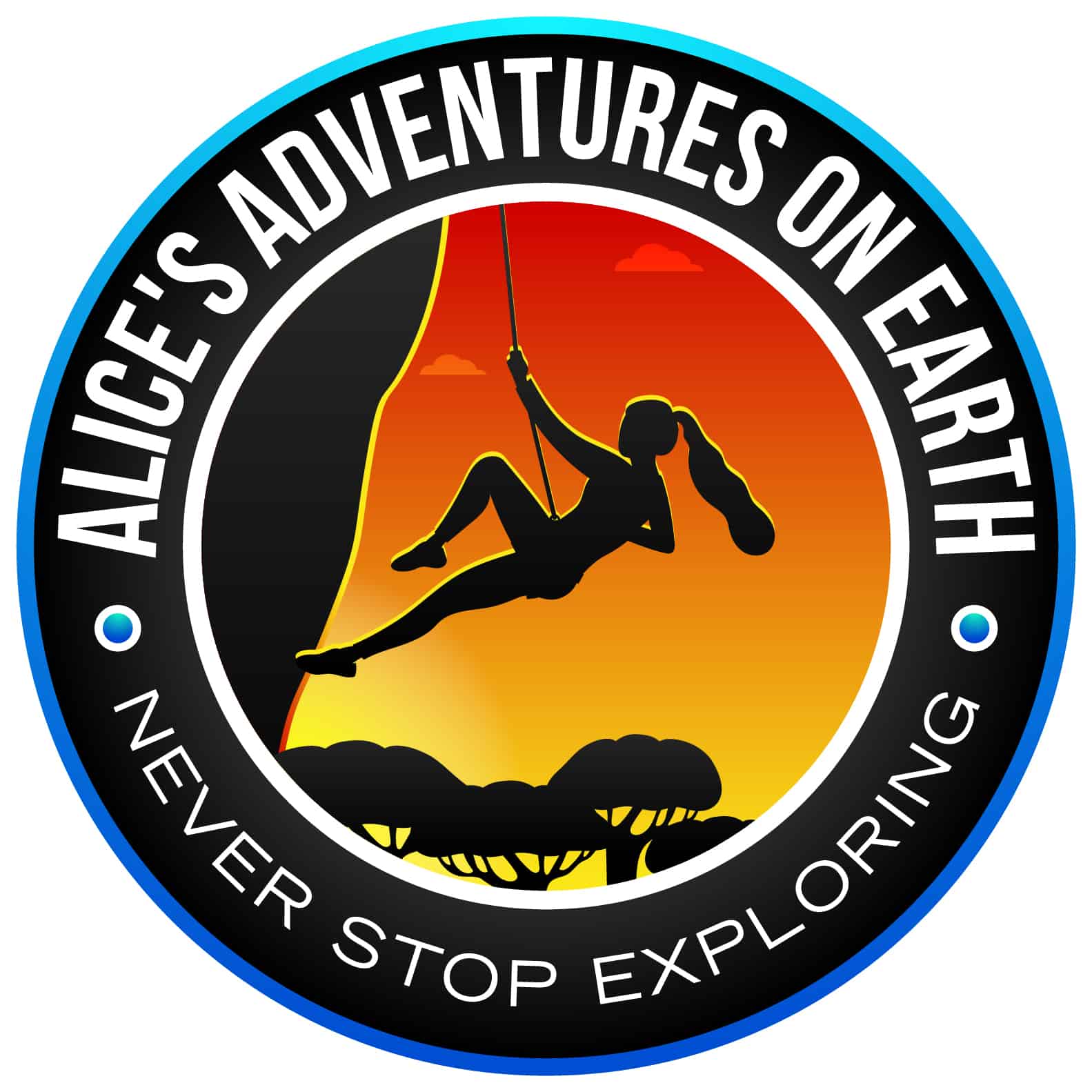
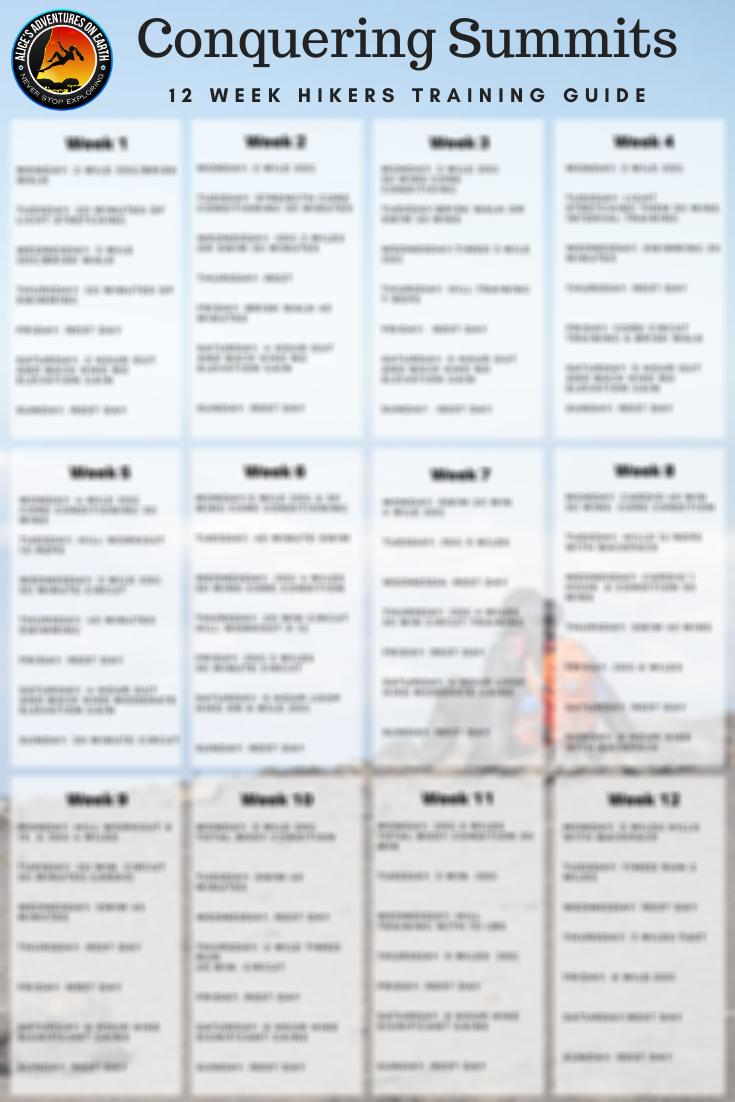


0 Comments